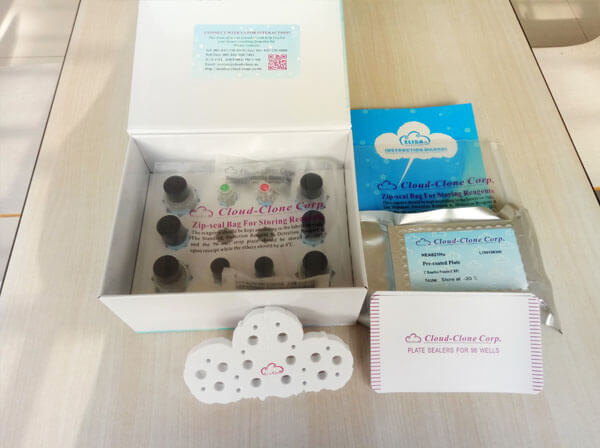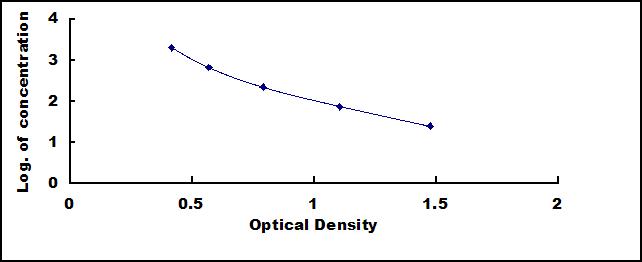Mini Samples ELISA Kit for Epinephrine (EPI) 

Adrenaline
- UOM
- FOB US$ 669.00 US$ 955.00 US$ 4,298.00 US$ 8,118.00 US$ 66,850.00
- Quantity
Overview
Properties
- Product No.MEA858Ge
- Organism SpeciesPan-species (General) Same name, Different species.
- ApplicationsEnzyme-linked immunosorbent assay for Antigen Detection.
Research use only - DownloadInstruction Manual
- CategoryMetabolic pathwayInfection immunityNeuro scienceHormone metabolism
Sign into your account
Share a new citation as an author
Upload your experimental result
Review

Contact us
Please fill in the blank.
Recovery
Matrices listed below were spiked with certain level of Mini Samples Epinephrine (EPI) and the recovery rates were calculated by comparing the measured value to the expected amount of Mini Samples Epinephrine (EPI) in samples.
| Matrix | Recovery range (%) | Average(%) |
| serum(n=5) | 86-101 | 89 |
| EDTA plasma(n=5) | 79-98 | 94 |
| heparin plasma(n=5) | 95-103 | 99 |
Precision
Intra-assay Precision (Precision within an assay): 3 samples with low, middle and high level Mini Samples Epinephrine (EPI) were tested 20 times on one plate, respectively.
Inter-assay Precision (Precision between assays): 3 samples with low, middle and high level Mini Samples Epinephrine (EPI) were tested on 3 different plates, 8 replicates in each plate.
CV(%) = SD/meanX100
Intra-Assay: CV<10%
Inter-Assay: CV<12%
Linearity
The linearity of the kit was assayed by testing samples spiked with appropriate concentration of Mini Samples Epinephrine (EPI) and their serial dilutions. The results were demonstrated by the percentage of calculated concentration to the expected.
| Sample | 1:2 | 1:4 | 1:8 | 1:16 |
| serum(n=5) | 86-103% | 98-105% | 85-92% | 90-104% |
| EDTA plasma(n=5) | 85-92% | 81-88% | 87-101% | 97-105% |
| heparin plasma(n=5) | 91-99% | 79-93% | 85-95% | 78-101% |
Stability
The stability of kit is determined by the loss rate of activity. The loss rate of this kit is less than 5% within the expiration date under appropriate storage condition.
To minimize extra influence on the performance, operation procedures and lab conditions, especially room temperature, air humidity, incubator temperature should be strictly controlled. It is also strongly suggested that the whole assay is performed by the same operator from the beginning to the end.
Reagents and materials provided
| Reagents | Quantity | Reagents | Quantity |
| Pre-coated, ready to use 96-well strip plate | 1 | Plate sealer for 96 wells | 4 |
| Standard | 2 | Standard Diluent | 1×20mL |
| Detection Reagent A | 1×60µL | Assay Diluent A | 1×6mL |
| Detection Reagent B | 1×60µL | Assay Diluent B | 1×6mL |
| TMB Substrate | 1×9mL | Stop Solution | 1×3mL |
| Wash Buffer (30 × concentrate) | 1×10mL | Instruction manual | 1 |
Assay procedure summary
1. Prepare all reagents, samples and standards;
2. Add 25µL standard or sample to each well.
And then add 25μL prepared Detection Reagent A immediately.
Shake and mix. Incubate 1 hour at 37°C;
3. Aspirate and wash 3 times;
4. Add 50µL prepared Detection Reagent B. Incubate 30 minutes at 37°C;
5. Aspirate and wash 5 times;
6. Add 50µL Substrate Solution. Incubate 10-20 minutes at 37°C;
7. Add 25µL Stop Solution. Read at 450 nm immediately.

Test principle
This assay employs the competitive inhibition enzyme immunoassay technique. A monoclonal antibody specific to Mini Samples Epinephrine (EPI) has been pre-coated onto a microplate. A competitive inhibition reaction is launched between biotin labeled Mini Samples Epinephrine (EPI) and unlabeled Mini Samples Epinephrine (EPI) (Standards or samples) with the pre-coated antibody specific to Mini Samples Epinephrine (EPI). After incubation the unbound conjugate is washed off. Next, avidin conjugated to Horseradish Peroxidase (HRP) is added to each microplate well and incubated. The amount of bound HRP conjugate is reverse proportional to the concentration of Mini Samples Epinephrine (EPI) in the sample. After addition of the substrate solution, the intensity of color developed is reverse proportional to the concentration of Mini Samples Epinephrine (EPI) in the sample.
Giveaways
Increment services
Citations
- METHODS AND REAGENTS FOR THE DIAGNOSIS, PREVENTION AND TREATMENT OF INSULIN RESISTANCEFPO:EO237136
- Glibenclamide attenuates myocardial injury by lipopolysaccharides in streptozotocin-induced diabetic micePubmed:Pmc4147163
- Study of baicalin on sympathoexcitation induced by myocardial ischemia via P2X3 receptor in superior cervical gangliaPubmed:25554221
- Catha edulis chewing effects on treatment of paranoid schizophrenic patientsPubMed: 25926735
- Ablation of Potassium-Chloride Cotransporter Type 3 (Kcc3) in Mouse Causes Multiple Cardiovascular Defects and Isosmotic PolyuriaPubmed:27166674
- Reduced lipolysis response to adipose afferent reflex involved in impaired activation of adrenoceptor-cAMP-PKA-hormone sensitive lipase pathway in obesitypubmed:27694818
- Non‐pharmacological interventions during childbirth for pain relief, anxiety, and neuroendocrine stress parameters: A randomized controlled trialPubmed:29512230
- Assessment of the TDCS Influence on Stress-Induced Disorders in Rats with Low Stress Sustainability and Endurance
- RFRP-3, the Mammalian Ortholog of GnIH, Is a Novel Modulator Involved in Food Intake and Glucose HomeostasisPubmed: 32328034
- Feeding induces cholesterol biosynthesis via the mTORC1–USP20–HMGCR axisPubmed: 33177714
- Blockade of adrenergic β‐receptor activation through local delivery of propranolol from a 3D collagen/polyvinyl alcohol/hydroxyapatite scaffold promotes bone repair …
- Anti-stress activity of some plants extracts of the North Caucasus flora
- Adipose tissue lipolysis is regulated by PAQR11 via altering protein stability of phosphodiesterase 4D33549845
- O-GlcNAc/Akt pathway regulates glucose metabolism and reduces apoptosis in liver of piglets with acute cold stress33651993
- Expression of LHCGR (Luteinizing Hormone/Chorionic Gonadotrophin Receptor) in Pheochromocytomas Unveils an Endocrine Mechanism Connecting Pregnancy …Pubmed:35189708










